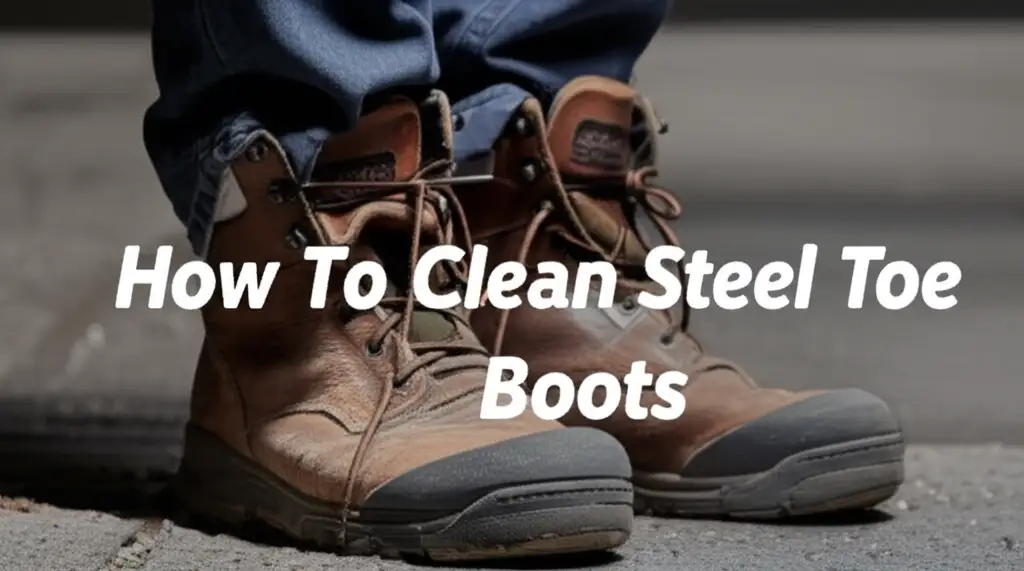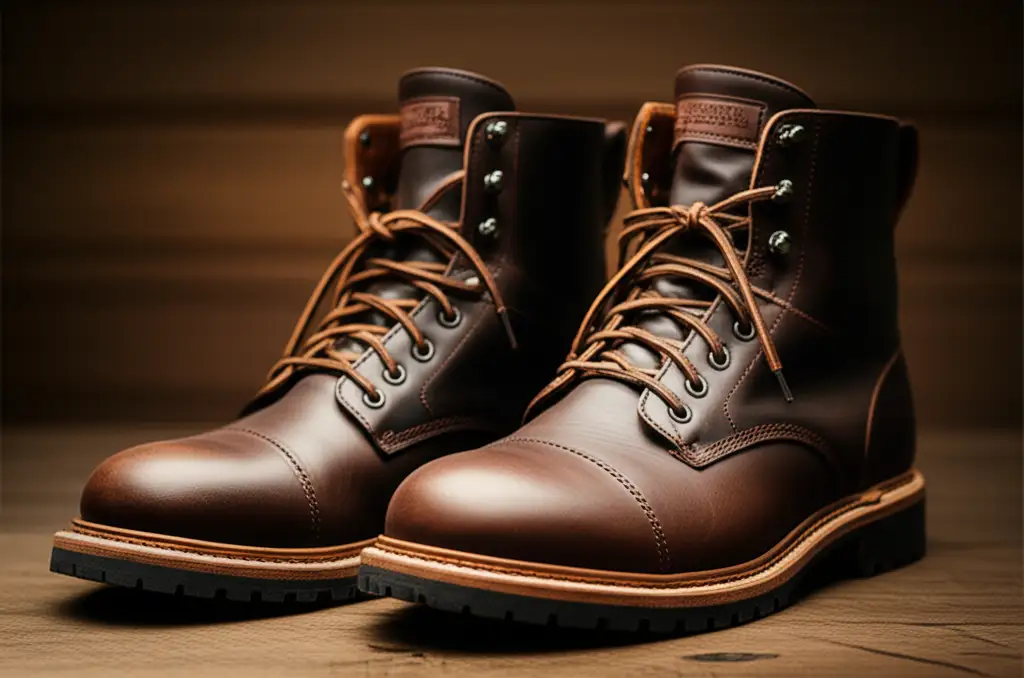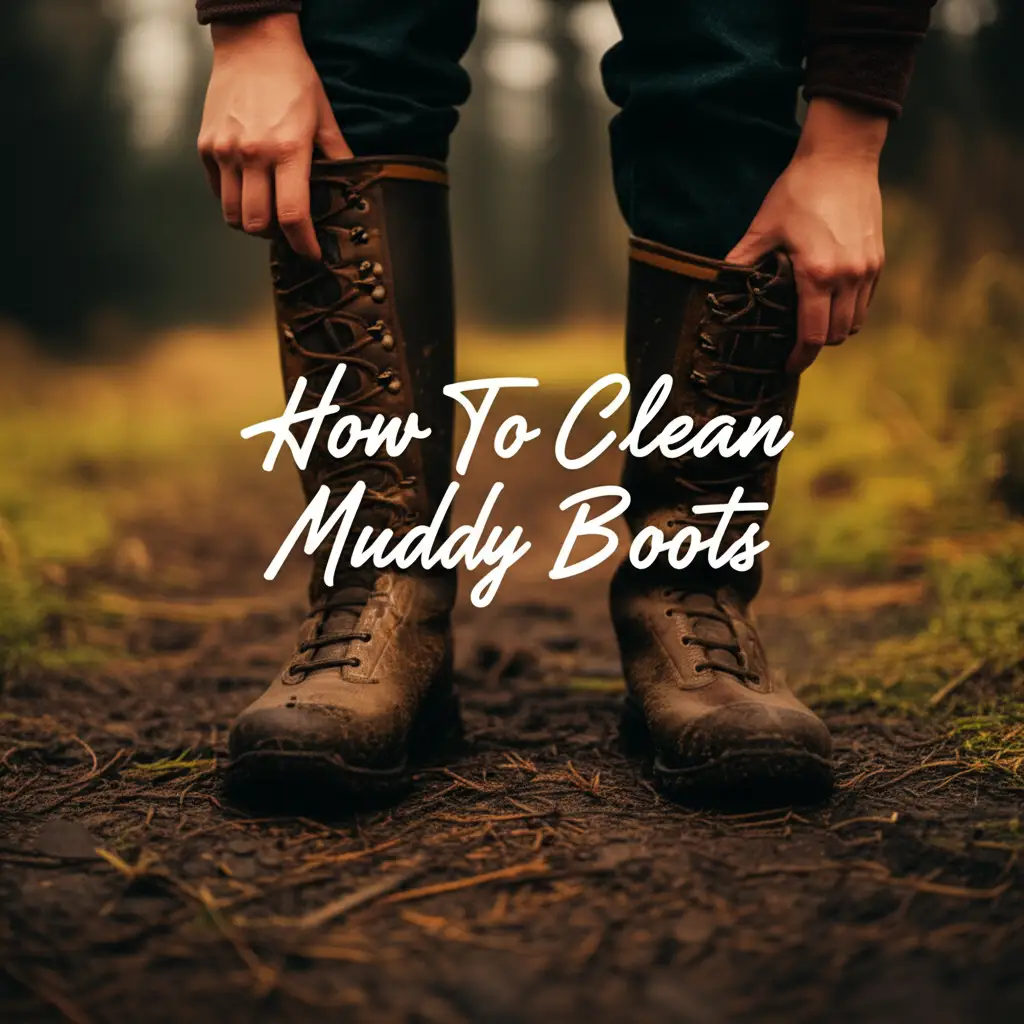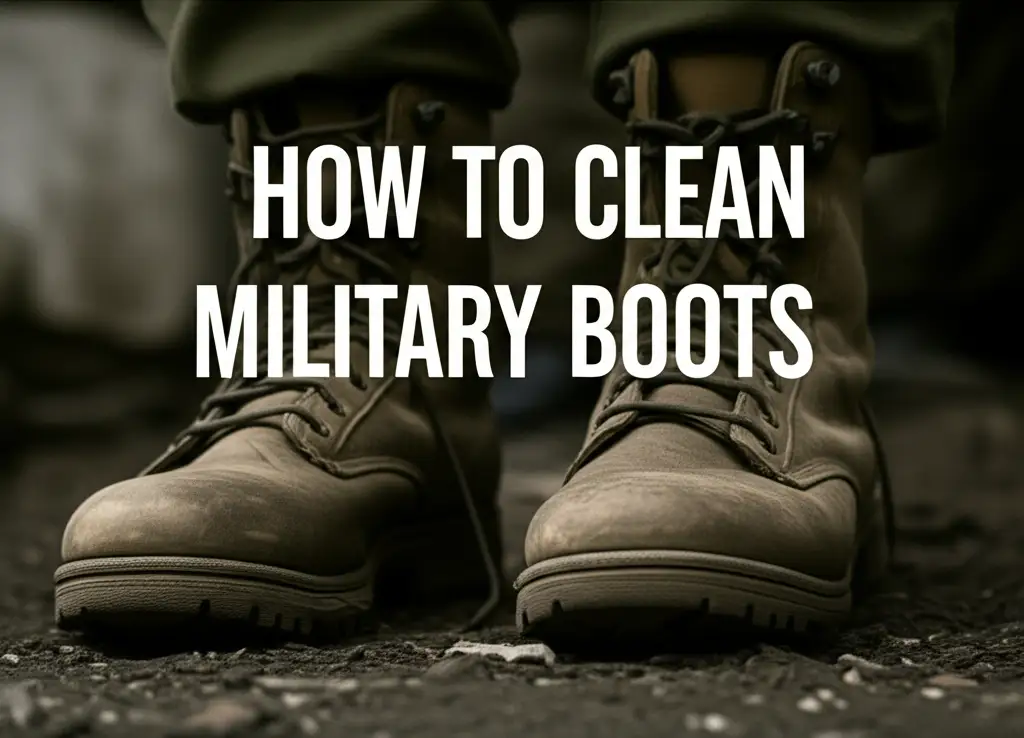· Boot Care · 19 min read
How To Clean Blundstone Boots
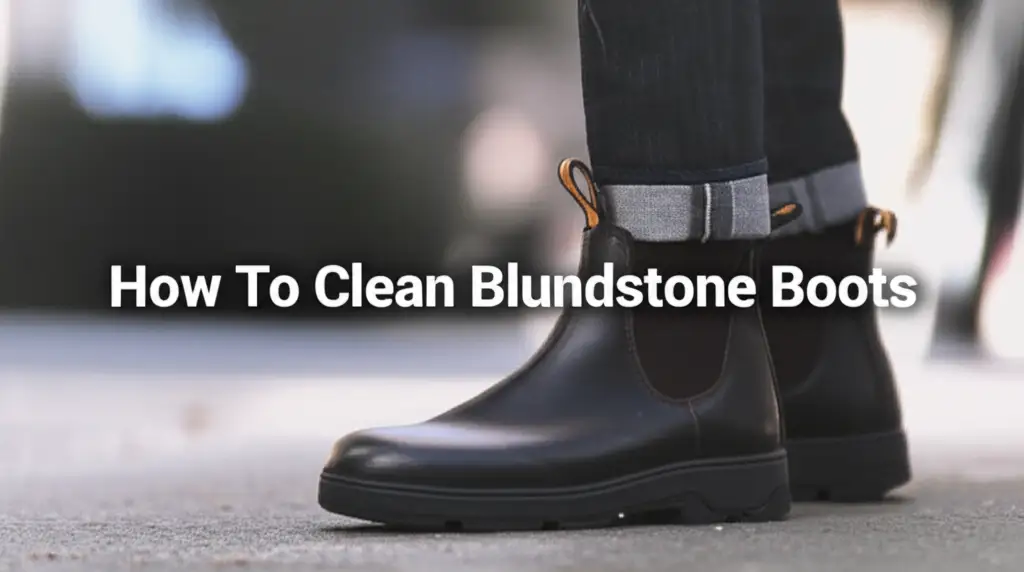
Achieve Pristine Blundstone Boots: A Complete Cleaning Guide
Blundstone boots are iconic. People love them for their durability and style. Over time, however, daily wear takes its toll. Dirt, mud, and stains become common issues. Proper cleaning helps keep your boots looking great. It also extends their life. This guide will show you how to clean Blundstone boots effectively. We will cover different materials like smooth leather, suede, and nubuck. You will learn the right tools and steps for each. Follow these instructions to protect your investment. Your Blundstones will stay comfortable and stylish for many years.
Takeaway:
- Identify Material: Know if your Blundstones are smooth leather, suede, or nubuck before cleaning.
- Gather Tools: Collect brushes, specific cleaners, conditioners, and protectors suitable for your boot type.
- Clean Regularly: Remove dirt and grime often to prevent deep stains.
- Condition and Protect: Always condition leather after cleaning and apply waterproofing for all materials.
- Dry Properly: Air dry boots away from direct heat to prevent damage.
To clean Blundstone boots, first identify the material. Then, gather soft brushes, damp cloths, and specific cleaners for leather or suede/nubuck. Gently remove surface dirt. Clean deeper with the appropriate product. Condition smooth leather. Use a suede brush for suede/nubuck. Finally, allow boots to air dry completely.
Understanding Blundstone Boot Materials
Blundstone boots come in various materials. Each material needs a specific cleaning approach. Knowing your boot’s material is the first step to proper care. You can usually find material information on the boot’s tag or Blundstone’s website. I own several pairs, and I have learned this distinction is key.
Smooth Leather Blundstones
Smooth leather is the most common Blundstone material. This leather is durable and water-resistant. It often has a polished or slightly matte finish. When cleaning smooth leather, you need products that moisturize. These products prevent the leather from cracking. Water and mild soap are generally safe. However, specialized leather cleaners work best. Always use a soft cloth or sponge for application. Avoid harsh chemicals. They can strip natural oils from the leather. This makes the leather dry and stiff. I always test new products on a small, hidden area first. This prevents any unwanted discoloration or damage.
Suede and Nubuck Blundstones
Suede and nubuck are different from smooth leather. Suede has a soft, fuzzy surface. Nubuck is similar but usually more durable. Its fibers are shorter and finer. These materials are more sensitive to water and stains. They require specialized cleaning tools. A suede brush helps remove dirt and restore the nap. Suede erasers can lift stubborn marks. Avoid liquid cleaners unless they are specifically made for suede or nubuck. Water can leave dark spots on these materials. This is why dry cleaning methods are often preferred. If they get wet, let them dry naturally. Then brush them gently.
Essential Tools and Cleaning Products for Blundstones
Having the right tools makes cleaning your Blundstone boots much easier. You do not need many items. But the right ones make a big difference. I keep a small boot cleaning kit ready. This ensures I can tackle messes quickly.
Brushes and Cloths
You will need a few types of brushes. A stiff-bristled brush is good for removing loose dirt from soles. A softer brush, like a horsehair brush, is perfect for smooth leather uppers. This brush polishes the leather and removes dust. For suede and nubuck, a dedicated suede brush is a must. This brush has rubber bristles or wire bristles. It helps lift dirt and restore the nap. You will also need clean, soft cloths. Microfiber cloths work well. They absorb moisture and buff surfaces without scratching. I use separate cloths for cleaning and conditioning.
Cleaning Solutions
The cleaning solution depends on your boot material. For smooth leather, a mild soap solution often works. Mix a few drops of dish soap with water. However, specific leather cleaners are better. They are formulated to clean without drying out the leather. For suede and nubuck, look for a specialized suede cleaner spray or foam. These products clean without saturating the material. Do not use strong detergents or abrasive cleaners. They can damage the delicate surfaces. I also keep a small spray bottle handy for water misting.
Conditioning and Protection Products
After cleaning, conditioning is important for leather boots. Leather conditioner replenishes moisture. It keeps the leather supple and prevents cracking. Apply it regularly, especially after a deep clean. For all Blundstone materials, a waterproofing spray is essential. Blundstones are known for being tough. Adding a protective layer helps them resist water and stains. Choose a spray suitable for your boot’s material. Silicone-based sprays work for smooth leather. Water-based sprays are often better for suede and nubuck. I reapply waterproofing every few months. This is especially true if I wear my boots often in wet conditions.
Step-by-Step Guide: Cleaning Smooth Leather Blundstone Boots
Cleaning smooth leather Blundstone boots is a straightforward process. Following these steps ensures a thorough clean. It also protects your boots for the long term. I follow this routine for my leather pairs.
1. Initial Dirt and Debris Removal
Begin by removing loose dirt. Take your boots outside. Use a stiff brush or an old toothbrush to scrape off mud and grime. Pay attention to the soles and crevices. Mud can harden, so gentle scraping is necessary. For tougher mud, let it dry first. Then, it crumbles off more easily. I find this first step saves a lot of cleaning effort later. If your boots are very muddy, you might find more tips on how to clean muddy boots. Make sure all large pieces of dirt are gone before moving on. This prevents scratching the leather during the washing stage.
2. Washing the Leather Uppers
Once the loose dirt is off, it is time to wash the leather. Dampen a soft cloth with clean water. Wipe down the entire surface of the boots. This removes dust and light grime. For deeper cleaning, use a dedicated leather cleaner. Apply a small amount of cleaner to a clean cloth. Gently rub it onto the leather in small sections. Work in circular motions. Do not saturate the leather. Too much water can damage it. Wipe off any excess cleaner with another damp, clean cloth. The goal is to clean without making the leather overly wet.
3. Proper Drying Techniques
After washing, proper drying is crucial. Do not place your boots in direct sunlight. Avoid using heaters or hair dryers. High heat can shrink or crack the leather. Instead, stuff your boots with newspaper or paper towels. This helps them keep their shape. It also absorbs excess moisture. Place the boots in a well-ventilated area indoors. Allow them to air dry completely. This can take several hours, or even overnight. Patience here prevents damage. I usually clean my boots in the evening. They are ready to go by morning.
4. Conditioning the Leather
Once the boots are dry, apply a leather conditioner. Conditioning restores moisture to the leather. It keeps the leather soft and prevents cracking. Apply a small amount of conditioner to a clean cloth. Rub it evenly over the entire leather surface. Use gentle, circular motions. Pay extra attention to areas that look dry or stressed. Allow the conditioner to absorb for a few minutes. Then, buff off any excess with a clean, dry cloth. This step is vital for maintaining the leather’s suppleness and appearance. It also creates a subtle shine.
5. Applying a Protective Layer
The final step is to add a protective layer. A good waterproofing spray or wax provides an extra barrier. This helps repel water and stains. Choose a product suitable for smooth leather. Apply it according to the product instructions. Usually, this involves spraying an even coat from a distance. Let the boots dry completely after application. This protective layer is especially useful if you wear your Blundstones in wet weather. It helps prevent water damage and makes future cleaning easier. Reapply this protective layer periodically. I usually reapply it every few months.
Special Care for Suede and Nubuck Blundstone Boots
Suede and nubuck require a different approach than smooth leather. Their napped surface is delicate. Water can easily stain them. Knowing how to care for them properly is key. I have learned this the hard way with a few accidental water spots.
1. Dry Brushing for Dirt Removal
Start with dry brushing. This is the most important step for suede and nubuck. Use a specialized suede brush. Gently brush the entire surface of the boots. Brush in one direction to remove loose dirt and dust. For caked-on mud, let it dry completely first. Then, carefully crumble it off with your fingers or a stiff brush. Follow with the suede brush. The goal is to remove all surface debris without wetting the material. I find brushing in short, gentle strokes works best. This preserves the delicate nap of the material.
2. Tackling Stains with Suede Erasers
For stubborn spots and marks, a suede eraser is your best friend. These erasers are designed to lift stains from the nap. Gently rub the eraser over the stained area. Use short, back-and-forth motions. The eraser will lift the dirt without damaging the material. For tougher stains, you might need to apply a bit more pressure. After erasing, use the suede brush to restore the nap. This helps blend the cleaned area with the rest of the boot. I keep a suede eraser handy for quick fixes. It works wonders on scuff marks too.
3. Spot Cleaning Wet Stains
Sometimes, wet stains happen. If you get a liquid stain, act quickly. Blot the area immediately with a clean, dry cloth. Do not rub. Rubbing can spread the stain. For deeper wet stains, use a specialized suede cleaner spray or foam. Apply a small amount to a clean cloth, not directly to the boot. Gently dab the cloth onto the stain. Follow the product instructions. Always test on an inconspicuous area first. Let the area air dry completely. Then, use your suede brush to restore the nap. If the stain is persistent, professional cleaning might be necessary.
4. Restoring the Nap
After cleaning, the nap of your suede or nubuck boots might look flattened. Restoring the nap is simple. Use your suede brush. Brush the entire boot surface in a uniform direction. This lifts the fibers. It brings back the soft, velvety texture. Some suede brushes have different sides. One side might be for general brushing. Another might be for restoring nap. Experiment to see what works best for your boots. Regular brushing also prevents dirt from settling deep into the fibers. This keeps your boots looking fresh.
5. Applying Suede and Nubuck Protector
Protection is vital for suede and nubuck. These materials are prone to water and oil stains. A good quality waterproofing spray creates a barrier. This barrier repels liquids. Choose a spray specifically designed for suede and nubuck. Apply it evenly over the entire boot surface. Follow the product instructions for application and drying time. Do not saturate the material. Allow the boots to air dry completely. Reapply the protector regularly. This proactive step significantly reduces the likelihood of future stains. It also makes routine cleaning much easier.
Tackling Common Blundstone Stains and Issues
Blundstone boots are workhorses. They face many challenges daily. Dealing with specific stains quickly keeps them looking good. I have encountered most of these issues myself. Here is how I handle them.
Mud and Dirt Accumulation
Mud and dirt are the most common enemies of Blundstones. My boots often come home covered in mud from walks. For fresh mud, let it dry completely first. Do not try to wipe wet mud. It will just spread. Once dry, scrape off large chunks with a blunt object or stiff brush. An old toothbrush works well for crevices. Then, use a damp cloth for smooth leather. Gently wipe away any remaining residue. For suede or nubuck, use a suede brush after the mud is dry. Brush in one direction to lift the dirt. Sometimes, your boots are so muddy that they need serious attention. You can learn more about how to get mud out of all kinds of boots by reading this guide on how to clean muddy boots. This is my go-to method for keeping my boots ready for the next adventure.
Salt Stains Removal
Winter brings salt stains. These white marks can be tough. They often appear around the sole and toe area. To remove salt stains from smooth leather, mix equal parts white vinegar and water. Dampen a clean cloth with this solution. Gently wipe the affected areas. The vinegar helps dissolve the salt. Rinse the cloth with clean water. Wipe the boots again to remove any vinegar residue. For suede or nubuck, use a specific suede cleaner or a very diluted vinegar solution applied sparingly with a cloth. Blot, do not rub. Always let the boots air dry. Then, condition leather or brush suede.
Oil and Grease Spots
Oil and grease stains are tricky. Act fast if you get one. For smooth leather, sprinkle cornstarch or talcum powder on the stain. Let it sit for several hours, even overnight. The powder absorbs the oil. Brush off the powder. Then clean the area with a leather cleaner. Repeat if necessary. For suede or nubuck, use the same powder method. Gently brush off the powder. If a mark remains, a suede eraser can help. Avoid water with oil stains on suede. It can set the stain. I once got bike chain grease on my boots. The cornstarch trick saved them.
Scuffs and Minor Abrasions
Scuffs are inevitable with active wear. For smooth leather, minor scuffs can often be buffed out. Use a soft cloth and a small amount of leather conditioner. Rub the scuff gently in a circular motion. The conditioner helps blend the scuff. For deeper scuffs, a leather polish or cream in a matching color can help. Apply sparingly. Buff to a shine. For suede and nubuck, a suede eraser works well on light scuffs. Gently rub the eraser over the scuff. Then, use a suede brush to restore the nap. Sometimes, scuffs add character. But it is nice to know how to fix them.
Odor Removal from Boots
Blundstones can develop odors, especially after heavy use. This happens due to sweat and bacteria. To remove odors, first ensure the boots are completely dry. Remove insoles if possible. Air them out in a well-ventilated area. Sprinkle baking soda inside the boots. Let it sit overnight, or for a full day. Baking soda absorbs odors. Then, shake out the baking soda completely. You can also use cedar shoe trees. They help absorb moisture and provide a fresh scent. For persistent odors, consider specialized boot deodorizers or sprays. Keeping socks clean and dry also helps prevent future odors.
Deep Cleaning and Restoring Older Blundstone Boots
Sometimes, your Blundstones need more than a quick clean. Older or heavily used boots benefit from a deep cleaning and restoration. This brings them back to life. I have seen old pairs look almost new again with the right care.
Addressing Persistent Grime and Stains
Persistent grime can build up in the leather’s grain or on the soles. For smooth leather, use a slightly stronger leather cleaner. Apply it with a brush for deeper penetration. Work in small sections. Scrub gently but firmly. Pay attention to seams and creases. Rinse thoroughly with a damp cloth. For very stubborn grime on soles, a mild soap and water solution with a stiff brush can work wonders. Ensure you dry the boots completely afterward. For suede and nubuck, multiple dry brushing sessions might be needed. A specific suede shampoo applied sparingly can help with deep stains. Follow drying and nap restoration steps carefully.
Revitalizing Dried or Damaged Leather
Over time, leather can dry out or crack. This is more common if you neglect conditioning. To revitalize dry leather, apply multiple thin coats of leather conditioner or balm. Allow each coat to absorb fully before applying the next. You can also use a leather oil for very dry leather. Rub it in with a soft cloth. Let it soak in for several hours. Then, wipe off any excess. This process replenishes essential oils. It restores flexibility and prevents further damage. For minor cracks, some leather repair kits can fill them. However, deep cracks might need professional repair. Consistent conditioning prevents this issue.
Sole and Edge Care
Do not forget the soles and edges of your Blundstones. They take a lot of abuse. Use a stiff brush and water to clean the rubber soles. A little mild dish soap can help remove stubborn dirt. Use an old toothbrush to get into the tread patterns. For the elastic side panels, a damp cloth is usually enough. If they are heavily soiled, a gentle spot clean with mild soap can work. Be careful not to saturate the elastic. Allow them to air dry. The edges of the leather or sole can also be cleaned. A fine-grit sandpaper or a special sole edge dressing can refresh their look. This attention to detail makes a big difference.
Re-Waterproofing for Maximum Protection
After a deep clean, re-waterproofing is essential. The cleaning process can strip away previous protective layers. For smooth leather, apply a high-quality leather waterproofing wax or spray. Ensure even coverage. For suede and nubuck, use a specific water-repellent spray designed for those materials. Follow the product instructions for application and drying time. Do not rush this step. A well-applied waterproofing layer is your best defense against future water damage and stains. I always reapply waterproofing after a thorough cleaning. This step protects my boots from the elements.
Maintaining Your Blundstone Boots for Longevity
Cleaning is one part of boot care. Regular maintenance is just as important. It prevents buildup and extends the life of your Blundstones. I follow these practices consistently.
Regular Brushing and Wiping
Make brushing a habit. A quick brush after each wear removes loose dirt. This prevents dirt from setting into the material. For smooth leather, a soft horsehair brush works wonders. It removes dust and maintains a subtle shine. For suede and nubuck, use a suede brush. Brush gently to keep the nap lifted. Wipe down smooth leather boots with a damp cloth regularly. This removes surface grime. This simple routine prevents deep cleaning from being a major chore. It keeps your boots looking respectable day-to-day. I often brush my boots quickly before putting them away.
Proper Storage Between Wears
How you store your boots matters. Do not just toss them in a pile. Store them in a cool, dry place. Avoid direct sunlight or extreme temperatures. These can damage the leather or fabric. Use shoe trees. Cedar shoe trees are best. They absorb moisture and maintain the boot’s shape. This prevents creasing and odors. If you do not have shoe trees, stuff the boots with newspaper. This also helps hold their shape. Keeping your boots upright and aired out extends their life. I store mine on a shoe rack.
Rotating Your Boots
If you own multiple pairs of Blundstones, rotate them. Wearing the same pair every day stresses the materials. It also traps moisture inside. Giving your boots a break allows them to dry out completely. This helps prevent odors and material breakdown. Rotation gives the materials time to recover. It also extends the life of each pair. I have three pairs of Blundstones. I try to wear a different pair each day. This simple practice helps them all last longer. It is a small effort for a big return.
Reapplying Protective Treatments
Protective treatments wear off over time. Regular reapplication is essential. For leather, reapply conditioner every few months, or when the leather looks dry. For all materials, reapply waterproofing spray. The frequency depends on how often you wear them and the conditions. If you wear them in rain or snow, reapply more often. If water stops beading on the surface, it is time for reapplication. Follow the product instructions for the best results. This proactive step saves a lot of cleaning effort. It keeps your boots shielded from the elements.
Frequently Asked Questions About Cleaning Blundstone Boots
Can I machine wash my Blundstone boots?
No, you should not machine wash Blundstone boots. Machine washing can damage the leather, stitching, and glues. It can cause cracking, shrinking, or delamination. Always clean Blundstone boots by hand. This ensures proper care and extends their lifespan. Hand cleaning allows you to control the process carefully.
How often should I clean my Blundstone boots?
Clean your Blundstone boots as needed. For light dirt, a quick wipe or brush after each wear is good. For deeper cleaning, do it every few weeks or months, depending on wear. If they get muddy or stained, clean them immediately. Regular maintenance prevents grime buildup and keeps them looking good.
What should I do if my Blundstone boots get soaked?
If your Blundstone boots get soaked, act quickly. Remove any insoles. Stuff the boots with newspaper or paper towels to absorb moisture. Place them in a well-ventilated area away from direct heat. Let them air dry completely. Do not use heaters or direct sunlight, as this can damage the material. Once dry, condition leather or brush suede.
Can I use olive oil to condition my Blundstone leather boots?
It is not recommended to use olive oil to condition Blundstone leather boots. While it may seem like a quick fix, olive oil can go rancid over time. This leaves an unpleasant odor and can damage the leather. Always use a specialized leather conditioner designed for footwear. These products provide proper nourishment without harmful side effects.
How do I remove black scuff marks from my Blundstone boots?
To remove black scuff marks from smooth leather Blundstone boots, use a clean cloth with a small amount of leather cleaner or conditioner. Gently rub the scuff mark in circular motions. For stubborn marks, a leather eraser or a tiny bit of rubbing alcohol on a cotton swab can help. For suede/nubuck, use a suede eraser.
What if my Blundstone boots develop mold?
If your Blundstone boots develop mold, address it immediately. For smooth leather, wipe the mold with a cloth dampened with a diluted solution of white vinegar and water (1:1 ratio). For suede or nubuck, use a stiff brush to remove dry mold, then gently dab with a cloth moistened with rubbing alcohol. Air dry thoroughly in a well-ventilated area. After cleaning mold, ensure boots are completely dry and stored in a low-humidity environment to prevent recurrence.
Keep Your Blundstones Ready for Adventure
Cleaning your Blundstone boots does not have to be a chore. It is an important part of owning them. By following these simple steps, you can keep your boots in top condition. Regular cleaning and proper care ensure they last for many years. You protect your investment. You also keep your feet comfortable and stylish. Remember to identify your boot material first. Gather the right tools. Then, follow the specific cleaning steps for leather or suede. Do not forget to condition and protect them. This proactive approach saves time and money. Your Blundstones are designed for adventure. Keep them ready for the next journey. Start caring for your Blundstones today.
- Blundstone cleaning
- Leather boot care
- Suede boot cleaning
- Boot maintenance
- Waterproofing boots
- Footwear care
- How to clean boots

